Dentsu Inc. Growth Design Unit (DGDU) provides 360-degree support for business growth, primarily for startups.
In January 2020, DGDU and its partner company Glossom jointly conducted a survey on the reality of "collaboration" between large corporations and startups, targeting "people involved in decision-making regarding collaboration with startups."
This article reveals the challenges, which could be called "collaboration pitfalls," identified from the survey results. It also explains "CoNext (Connect)," the new collaboration support service released by DGDU to address these challenges.
The rapidly increasing collaborations between large corporations and startups fall into two patterns
DGDU began with "360-degree business support" for media and platform startups, but its support scope has now expanded to include SaaS(※1), manufacturers, and the new business divisions of large corporations.
※1=SaaS (Software as a Service)
A software service where users can utilize only the necessary functions as needed.
Through supporting both "startup business growth" and "new business development for large corporations," we recognized a significant need for collaboration between the two.
Looking at broader trends, the creation of the "Open Innovation Promotion Tax System" (※2) – a tax measure encouraging collaboration between large corporations and startups – is expected to boost investment from large corporations into startups and increase such collaborations.
※2=Open Innovation Promotion Tax System
A system where large corporations can deduct 25% of their investment amount from taxable income when investing ¥100 million or more in unlisted companies established less than 10 years ago, thereby reducing their tax burden. Applicable to investments made between April 2020 and March 2022.

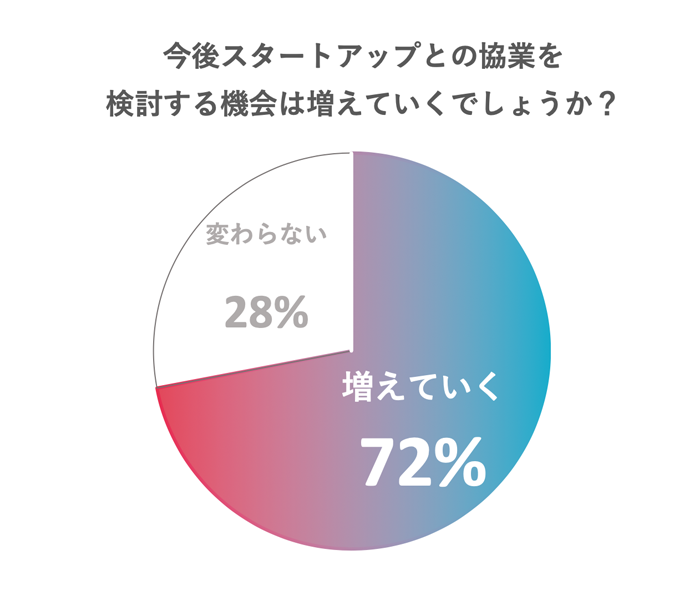
Dentsu Inc. / Glossom Joint Survey on the Actual State of Collaboration Between Large Corporations and Startups
Among large corporate personnel involved in collaborations with startups, a full 71% stated that "collaborations with startups have increased in the past year," and 72% responded that "such collaborations will continue to increase going forward."
Why do large corporations collaborate with startups in the first place?
Collaboration between large corporations and startups broadly falls into two patterns. The first is open innovation (※3), aimed at developing new businesses. The second is digital transformation (※4), aimed at improving the efficiency of existing businesses.
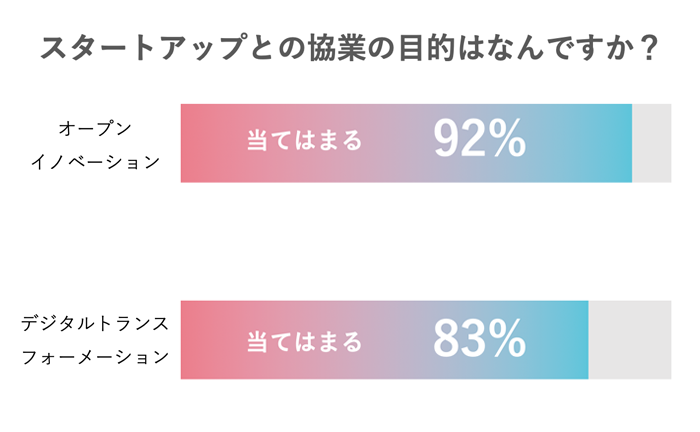
Dentsu Inc. / Glossom Joint Survey: "The Reality of Collaboration Between Large Corporations and Startups"
※3=Open Innovation
An initiative that combines technologies, services, know-how, and data not only from within the company but also from other companies (especially those in different industries or fields) to achieve innovative results.
※4=Digital Transformation
Efforts to transform customers' lives for the better by integrating advanced digital technologies into the company's business. Efforts to update (transform/evolve) the business itself by digitizing existing operations.
However, large corporations seeking to advance open innovation and digital transformation often face common pitfalls when collaborating with startups.
The diagram below shows the factors that actually determine the success or failure of collaborations between large corporations and startups, as revealed by our research.

Dentsu Inc. / Glossom Joint Survey: "The Reality of Collaboration Between Large Corporations and Startups"
Summarizing these open-ended responses reveals three key "pitfalls" in collaboration.
● Three Traps That Separate Success from Failure
① Lack of a Clear Future Vision After Collaboration
② Inability to properly evaluate startups
③ Inability to operate as one team across corporate boundaries
DGDU's solution to avoiding these pitfalls will be introduced later in this article. But first, let's explain a new "trend" emerging in collaborations between large corporations and startups.
This is the "collaboration pattern involving capital measures like M&A" ( ). This approach also aims to bridge the gap between the two parties by establishing a capital relationship, thereby avoiding the aforementioned pitfalls.
In collaborations between large corporations and startups, M&A is also common.
Cases of capital measures, including M&A, through partnerships with startups are increasing. In 2019 alone, numerous events shook the industry, such as Yahoo Japan's acquisition of ZOZO.
Why are capital measures chosen for corporate-startup collaborations? The benefits for both parties are as follows:
● Advantages for Large Corporations
・Quickly fill gaps in business development
・Minimizes conflicts of interest with existing businesses
● Benefits for Startups
・Strengthen business foundations (people, resources, capital)
・Potential for increased business value through synergies with other large corporation divisions
In fact, the percentage of companies that responded "We have considered M&A within the past year" surged from 16% two years ago to 72%, and a further 65% stated they expect opportunities for consideration to increase going forward.
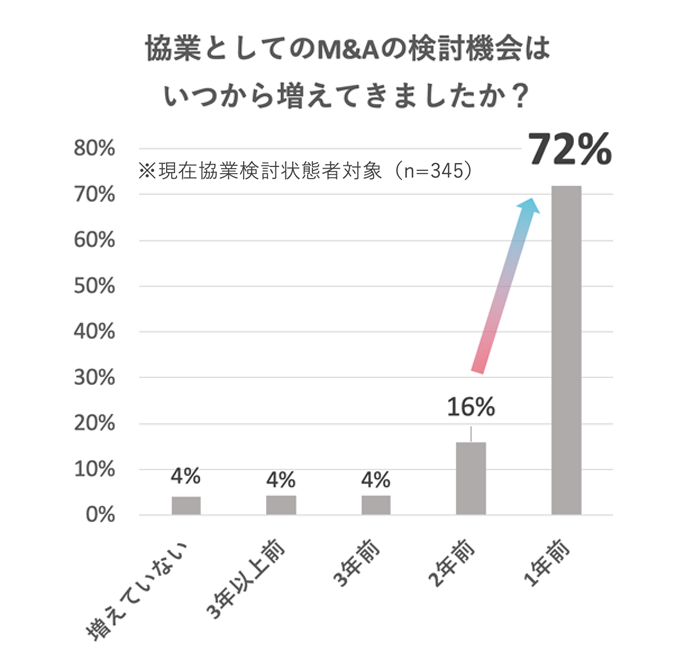
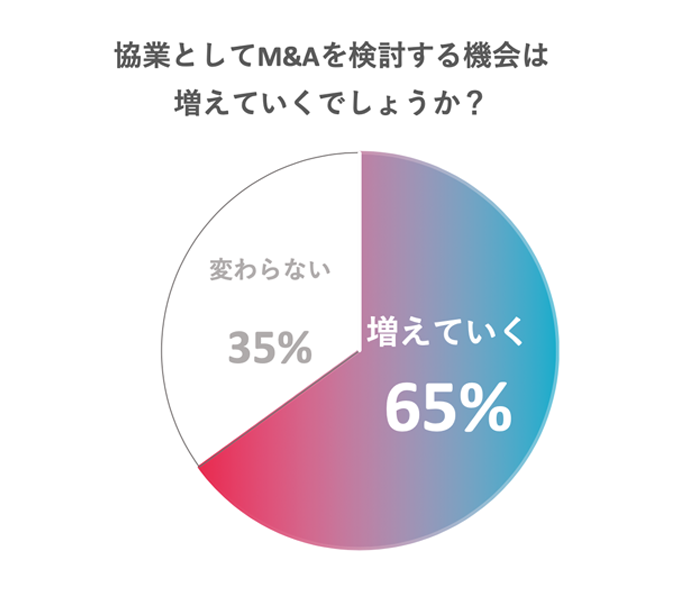
Dentsu Inc. / Glossom Joint Survey: "Collaboration Between Large Corporations and Startups"
From a startup perspective, the traditional exit strategy pursued by Japanese startups has been an initial public offering (IPO). However, influenced by changes in Japan's IPO environment, a future where M&A becomes the mainstream exit strategy is anticipated. Indeed, in the United States—considered to be 20 years ahead of Japan—M&A as the exit goal is already commonplace, with only about 10% of companies aiming for an IPO.
※5=Exit
In startup businesses or corporate revitalization, founders or funds (such as venture capital or revitalization funds) sell their shares to realize profits. Primary methods include initial public offerings (IPOs), share transfers (M&A), and management buyouts (MBOs).
Based on the chart below, it appears M&A will likely gain significant momentum in Japan around 2025.
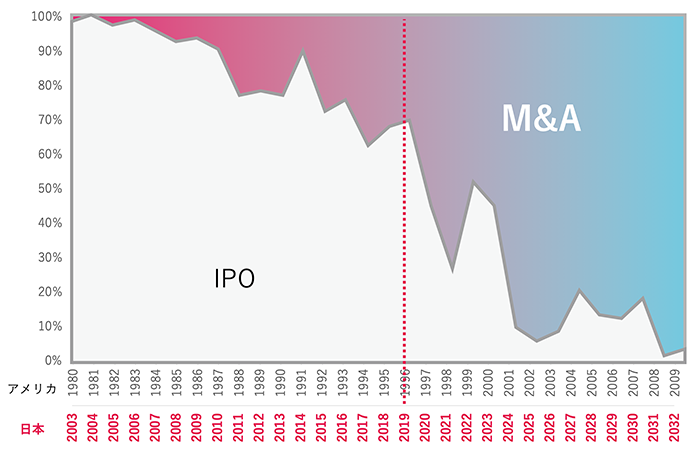
From the Ministry of Economy, Trade and Industry's "Report of the Study Group on Class Shares Issued by Unlisted Companies," November 2011
On the other hand, this survey revealed that significant challenges remain between the "consideration" and "implementation" phases of M&A between large corporations and startups. These challenges stem from insufficient M&A experience during the consideration phase, a lack of mutual understanding with startups, and inadequate organizational structures to drive the process forward. In some cases, achieving internal consensus within the corporation proved to be a bottleneck for implementation.

Dentsu Inc. / Glossom Joint Survey on the Actual State of Collaboration Between Large Corporations and Startups
Accelerating Collaboration Between Large Corporations and Startups with "CoNext"
To solve these "collaboration" pitfalls, DGDU launched "CoNext (Connect)", a service supporting collaboration between large corporations and startups.
"CoNext" provides the services shown below, centered on "Matching," "Business Making," and "Business Growth," to create and advance collaborations between large corporations and startups.

It matches large corporations—which are also Dentsu Inc.'s existing communication business clients—with startups pursuing innovative challenges. Then, through support leveraging DGDU's business growth perspective cultivated through past activities, it helps them become one team to foster new innovation. This service is specifically dedicated to promoting "collaboration" between large corporations and startups.
DGDU will form a trinity with large corporations and startups, transforming the nature of collaboration and bringing new value to society. We plan to create various matching opportunities going forward.
If you are responsible for open innovation, digital transformation, or collaboration with startups at a large corporation, or if you are a startup seeking connections with large corporations and are interested in "CoNext" and DGDU, please contact us.
CoNext Release:
https://www.dentsu.co.jp/news/release/2020/0131-010012.html
Contact: dgdu@dentsu.co.jp
[Survey Overview]
Research Firm: Macromill
Survey Method: Online survey (conducted January 2020)
Sample Composition: Decision-makers regarding collaboration with startups at companies with 500 or more employees (Sample size: 413)












